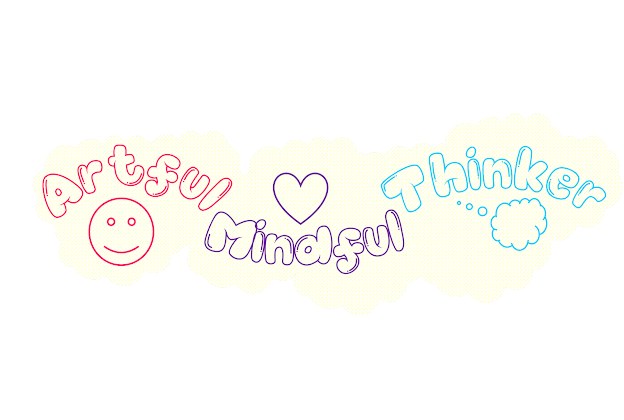What do we
think?
Why do we
think?
How do we
think?
Who benefits
from this thinking?
What do we
end up with after thinking?
Mr. Thinko
the thinker has 40 kids. He is on a continuous journey visiting all of them.
They all live in one big village, but each lives in a separate house. The
houses are scattered around a hill with one big road connecting them. Mr.
Thinko keeps going up and down, around and around the hill to finish the
visits. The houses are numbered and arranged in avenues. With a specific name
for each avenue, Mr. Thinko finds it easy to visit all of his kids.
Going up one
side of the hill, the ‘’Hook’’ avenue is occupied by three kids; the first is
always alert and likes to ‘’be aware’’ of all that surrounds him. The second
kid, ‘’Observer’’ likes to enjoy using all his senses to have a detailed image
of what he notices. The third and last kid in this avenue is ‘’Focus’’, the
sharp person who chooses one side of the image and examines it thoroughly.
These three people are always looking for clarity and precision in their work. What
is it that we are thinking about?
Now Mr.
Thinko is on top of the hill and ready to go down the second avenue that has
the houses of another three of his kids; the ‘’Target’ avenue.
These kids
here are seeking significance all the time. Why do we think about this? They
always work together, the first kid ‘’recognizes the problem’’, the second one
‘’sets the goal’’ on the desired solution, and the third one keeps ‘’cleaning
all the impossible options’’ for this solution.
Now Mr.
Thinko is ready to climb another side of the hill, the ‘’extension’’ avenue,
which is the longest one where seventeen of his kids are living. Their
interest now is to extend their thinking to the max they can. Searching for depth
and breadth, critical and creative thinkers try to answer the question ’’How do
we think?’’. Critical thinkers deal with info, opinions, and feelings, while
creative ones deal with ideas.
To deal with
info one needs to ‘’ask questions’’ and ‘’find answers’’, and to do so we need
to be able to ‘’dig deep’’. ‘’Finding patterns’’, ‘’dealing with instructions’’,
‘’illustrating a concept’’ and ‘’displaying info’’ are all important to make
use of these info.
The opinion
kids know how to ‘’consider all factors’’ and understand the ‘’different points of
view’’ when dealing with an issue.
The feelings’
kids have ‘’emotional intelligence’’ as they know how to understand themselves
and others, and also know how to control themselves and their relationships with other people.
Now comes
the noisy people who go in all directions looking for ideas. They are very
clever kids who are ‘’fluent’’, ‘’flexible’’, know how to ‘’reach the
extremes’’, ‘’can find alternatives’’, know how to ‘’merge ideas’’ together,
use ideas as ‘’stepping stones’’ to new ones, and ‘’imagine new original
things’’.
Mr. Thinko
now has reached the highest point on the hill and has a lot in his head that
needs to be sorted out in order to know what to do with it. So off to the
next avenue down the hill, the ‘’summary’’ one. Looking for accuracy and fairness
the kids in this avenue know how to‘’connect’’ ideas and ‘’correlate’’ them. They search for ‘’contradiction’’
in order to ‘’judge’’ these ideas. And to reach a trustworthy ‘’conclusion’’ they need
‘’evidence’’. ‘’Simplifying’’ things is good for thinking, and to make things
even better, one needs to give ‘’titles’’ to things for good communication.
Time to ‘’take
action’’, Mr.Thinko is ready to climb again the third and last side of the
hill. Seeking relevance, the kids who live in this avenue know how to ‘’choose’’
the proper option, ‘’find the reason’’ for anything, ‘’determine the
consequences’’ for any action, ‘’form beliefs and values’’ that govern their
behavior, know how to ‘’take a decision’’, ‘’plan’’ to make this decision come
real, and ‘’reflect’’ on the way they proceed.
Going back
home, Mr. Thinko will pass by his last two kids while sliding down the hill. The
‘’experience’’ avenue has the house of ‘’memory’’ where learning is conserved. Who
is going to make use of this gained wisdom? By logic, this experience should be
shared with the world where one needs to know how to‘’ express’’ all that
happened during this long journey in the brain, the village with 40 houses
positioned on a hill with lots of ups and downs.

